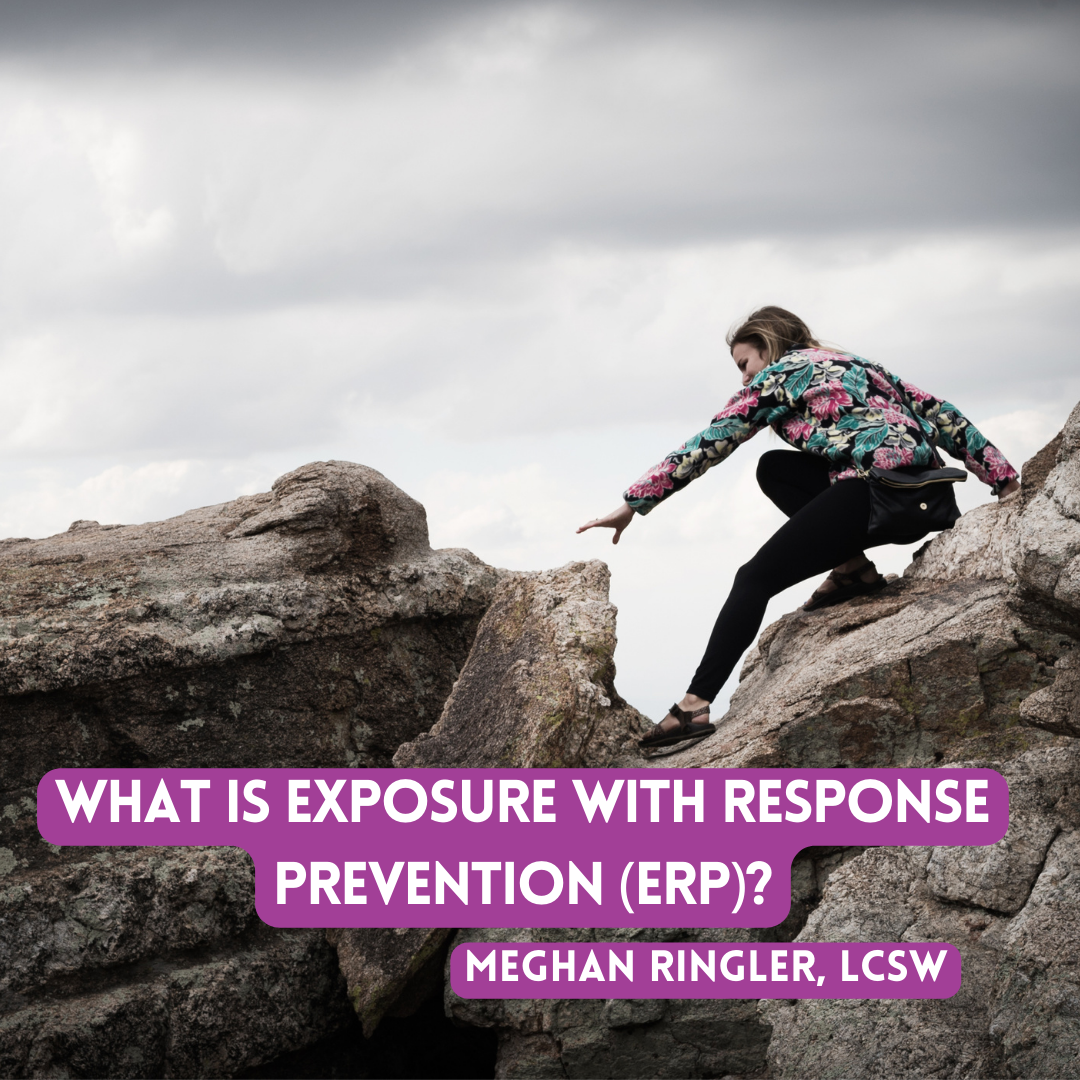What is Exposure with Response Prevention (ERP)?
Exposure Response Prevention (ERP) is a type of behavioral intervention, commonly used for anxiety disorders and obsessive compulsive disorder (OCD). It requires clients to actively move towards once avoided stimuli as a way to retrain the fear response in the brain. And it’s a highly effective treatment for anxiety disorders! ERP is based on the premise that our brain, specifically the Amygdala, learns best through “doing.” While thinking our way out of something has its benefits, in the context of OCD, sometimes the best medicine is “getting back on the horse.” So you might be thinking, is ERP just a real life episode of Fear Factor? Well, not exactly.
What is Exposure (E)?
The exposure aspect of ERP involves the client evoke feared or avoided thoughts, emotions, sensations, images and situations in order to elicit a fear response or create an obsessional schema (1). With the caveat that the client refrains from engaging with safety behaviors or compulsions as a way to alleviate distress. Most importantly, the client is always the “captain” and will decide when and how the exposure is engaged with. Research has shown that “willingness” greatly improves the efficacy of exposure response prevention(2). Thus, it is of utmost importance that the client is consenting and willing to engage with the fear. So often in life we discredit or downplay our ability to tolerate discomfort, ERP challenges you to step in your power and see that with time and repetition once feared experiences can be tolerated.
What is Response Prevention (RP)?
Response Prevention is a very important counterpart of exposure. It requires that the client actively choose not to engage with fear reduction strategies such as safety behaviors or compulsions. The more a client can move away from compulsions in the face of exposure, the more the brain starts to learn that it is safe. To better understand this point, let's look at the OCD cycle:
Image credit: Treat My OCD
The more you engage with the compulsion, the more you are signaling to the brain that this experience is truly something to fear and thus the fear response is valid. With time and consistent disengagement from compulsions the fear response will start to quiet.
How To: ERP
To start, you and your therapist will identify your obsessions, triggers and compulsions. Once these are cataloged you will create a hierarchy using your triggers and obsessions, ranking them by the distress level they elicit. This involves creativity on the part of the client and therapist, and should always be created in collaboration with each other. The hierarchy serves as a roadmap to exposure sessions, however more organic exposures can be performed that may veer outside of the outlined exposure hierarchy.
Following the hierarchy creation, exposures are performed gradually from least distressing to most at a pace set by the client. The purpose of starting at the least distressing trigger is for the client to develop confidence and build their distress tolerance muscle to face more significant challenges in the future. For exposures to be most effective, response prevention tactics must be adhered to. An example of a response prevention tool is the idea of non-engagement responses which is “using brief, simple words or phrases that emphasize the irrelevance of intrusive thoughts and help you lean into uncertainty—things like “Whatever,” “Maybe, maybe not,” “So what?” or “Okay, fine”(3).
Over time the goal is that the client lives more flexibly in relation to their obsessions or triggers. This could look like habituating to the trigger or over time the client begins to see that the feared outcome is wrong or is not as scary as once perceived.
Ok, so how do I know ERP is working?
If done correctly, the following things can happen:
You will feel an initial increase in anxiety, uncertainty, and obsessional thoughts.
You will find that these feelings and thoughts are distressing, but also that they can’t hurt you — they are safe and manageable.
When you stop fighting the obsessions and anxiety, these feelings will eventually begin to subside.
This natural drop in anxiety that happens when you stay “exposed” and “prevent” the compulsive “response” is called habituation.
You will find that your fears are less likely to come true than you thought.
You will get better at managing “everyday” levels of risk and uncertainty (1).
Think of ERP like a pool of cold water on a summer day, you have the option of cannonballing in, or slowly submerging yourself in the water, all leading to the same result- you eventually begin to tolerate and maybe even enjoy the once cold water. ERP is challenging like any other therapy, but the rewards are infinite.
Exposure Response Prevention should be performed under the guidance of a licensed and experienced professional to ensure proper use of this specific therapeutic intervention.
Resources:
https://www.actbeyondocd.com/wp-content/uploads/2019/08/Willingness-Reid_et_al-1057-Depression_and_Anxiety.pdf
https://www.treatmyocd.com/what-is-ocd/what-is-erp



